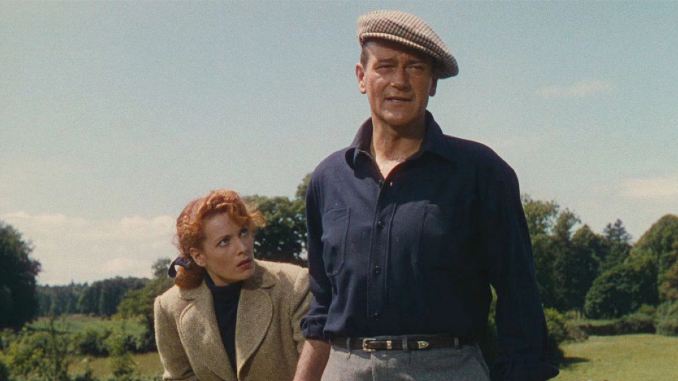The Quiet Man Remains John Ford’s Most Intimate, Personal Film

Sentimentality is not a word we often associate with John Ford, at least not the version of John Ford that the popular imagination has conjured in the years since the legendary director’s death. Of the directors who still loom large in Ford’s era, Frank Capra is usually the one we most often associate with gauzy, treacly views of life and love, while Ford is painted with a broad brush as the gruff technician, sitting behind the camera with a scowl while capturing the brutal beauty of the American West. In his later years, with his eyepatch and pipe, he looked more like a field general than a luminary of the cinema, and depending on who you asked, his on-set behavior backed that image up.
So, in fact, did Ford himself. He wasn’t prone to romanticizing his films beyond what you see onscreen, calling directing “a job of work” and often retreating from questions about his cinematic output as a form of art (in interviews with Peter Bogdanovich, for example, he famously offered one-word answers and called “cut” rather than respond to certain questions). That attitude, along with his instrumental role in shaping the Western into a cinematic art form, sanded away many of the finer details of Ford’s life and work in American pop culture. To many, he’s that guy who made The Searchers and Stagecoach with John Wayne, and little more.
But then there’s The Quiet Man.
The film that won Ford his fourth and final Oscar for Best Director (still an Academy record) feels like an outlier among his best-known works, even when placed alongside the light-in-the-darkness vulnerability of The Grapes of Wrath or the bittersweet wistfulness of How Green Was My Valley. There’s a naked emotion to the film, and a contrast that comes when placed alongside Ford’s other collaborations with Wayne, that makes The Quiet Man sing with a brightness that Ford always had in moments, but rarely displayed for an entire feature. It’s that brightness, and an enduring, penetrating charm, that’s made The Quiet Man endure as a classic alongside The Searchers and The Man Who Shot Liberty Valance, and it’s proof of the director’s oft-forgotten versatility.
But the impact of The Quiet Man goes beyond that of a flexible director taking his “job of work” approach to yet another genre in yet another vibrant location. It’s not just that Ford traded the burnt orange awe of Monument Valley for the verdant seductions of the Emerald Isle. Ford didn’t direct this film because it came across his desk as an attractive prospect, and he thought it might be nice to shoot on location in Ireland for a couple of months. No, Ford chased this movie, just as the title character chased his romantic destiny—and he did it for nearly two decades.
What made Ford take such a personal hand in shaping this pastoral masterpiece, further cementing his place among the greatest filmmakers who ever lived? It starts with Ireland.
-

-

-

-

-

-

-

-

-

-

-

-

-

-

-

-

-

-

-

-

-

-

-

-

-

-

-

-

-

-

-

-

-

-

-

-

-

-

-

-








































